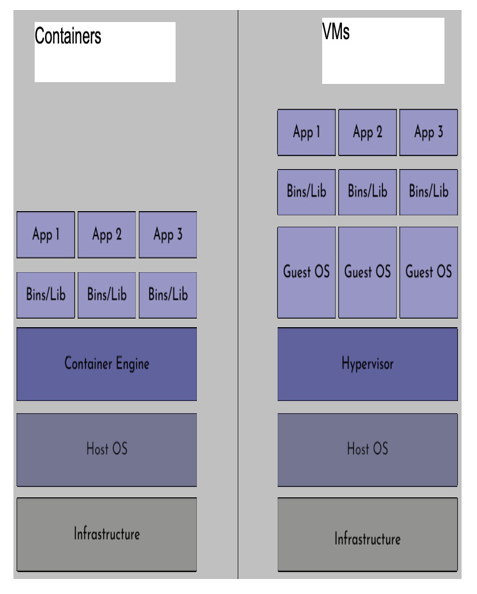Understanding the difference between virtualization and containerization
Virtualization and containerization are two distinct technologies that are used in cloud computing, each with its characteristics and use cases. Here’s a comparison of the key differences between virtualization and containerization.
- Architecture and abstraction level:
- Virtualization: Virtualization operates at the infrastructure level. It creates a virtual layer between the physical hardware and the operating system, allowing multiple VMs to run on a single physical server. Each VM runs its own operating system and applications, simulating a complete computing environment.
- Containerization: Containerization operates at the application level. It encapsulates applications and their dependencies into isolated containers. Containers share the same operating system kernel, but each container appears as a separate and isolated instance, running its own processes and resources.
- Resource utilization:
- Virtualization: VMs require a dedicated amount of system resources, including memory, storage, and processing power. Each VM runs a full-fledged operating system, which can result in higher resource consumption and slower startup times.
- Containerization: Containers are lightweight and share the host system’s operating system kernel. They consume fewer resources, as they do not require a separate operating system instance. Containers have faster startup times and can be provisioned and scaled more quickly.
- Isolation and security:
- Virtualization: VMs provide stronger isolation between instances as they operate with separate operating system instances. This isolation offers better security and prevents applications in one VM from affecting others.
- Containerization: Containers provide a level of isolation, but they share the same operating system kernel. While this shared kernel may introduce a potential security risk, containerization technologies employ various security mechanisms, such as namespaces and control groups, to enforce isolation between containers.
- Application portability:
- Virtualization: VMs are highly portable, allowing applications to run on different physical servers or hypervisors with minimal modification. However, there may be dependencies on specific hardware or hypervisor configurations.
- Containerization: Containers are designed for portability. Applications packaged in containers can run consistently across different environments, including different operating systems and cloud platforms, so long as the host system supports the containerization runtime (for example, Docker or Kubernetes).
- Performance:
- Virtualization: VMs have a slight performance overhead due to the emulation of hardware and the presence of a complete operating system instance
- Containerization: Containers have lower overhead as they share the host system’s operating system kernel, resulting in faster performance and better utilization of system resources
- Use cases:
- Virtualization: Virtualization is well suited for running multiple applications with different operating system requirements on a single physical server. It is commonly used for server consolidation, running legacy applications, and managing complex network topologies.
- Containerization: Containerization excels in deploying and scaling cloud-native applications, microservices architecture, and DevOps practices. It enables efficient resource utilization, fast application deployment, and portability across different environments.
The following figure depicts the architectural difference between virtualization and containerization:

Figure 2.6 – VMs versus containers
VMs and containers have distinct differences. VMs operate on a hypervisor layer, utilizing separate guest operating systems, resulting in higher resource overhead. In contrast, containers share the host operating system, making them lightweight with reduced resource utilization. VMs offer strong isolation, while containers provide process-level isolation. VMs have higher performance overhead, while containers perform better due to direct resource usage. VMs are highly portable but face compatibility challenges, whereas containers excel in portability. VMs scale by adding or removing instances, while containers enable rapid scaling. VMs require separate management tools, while containers can be managed with container orchestration platforms. Understanding these differences aids in selecting the appropriate technology based on specific needs and considerations.
Virtualization and containerization offer different approaches to resource isolation, application deployment, and management in cloud computing. Virtualization operates at the infrastructure level, providing full operating system instances for each VM, while containerization operates at the application level, encapsulating applications and sharing the host operating system. Both technologies have their advantages and use cases, and the choice depends on factors such as workload requirements, resource utilization, portability needs, and security considerations.
